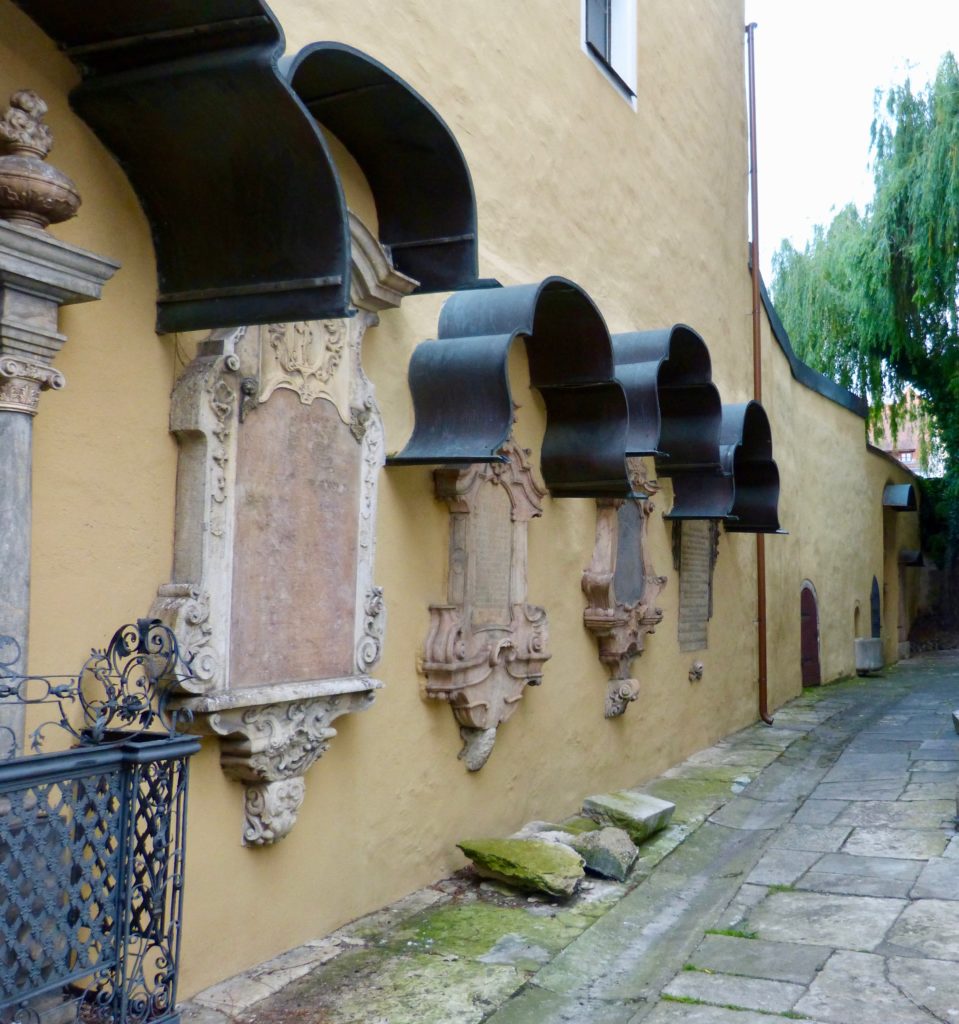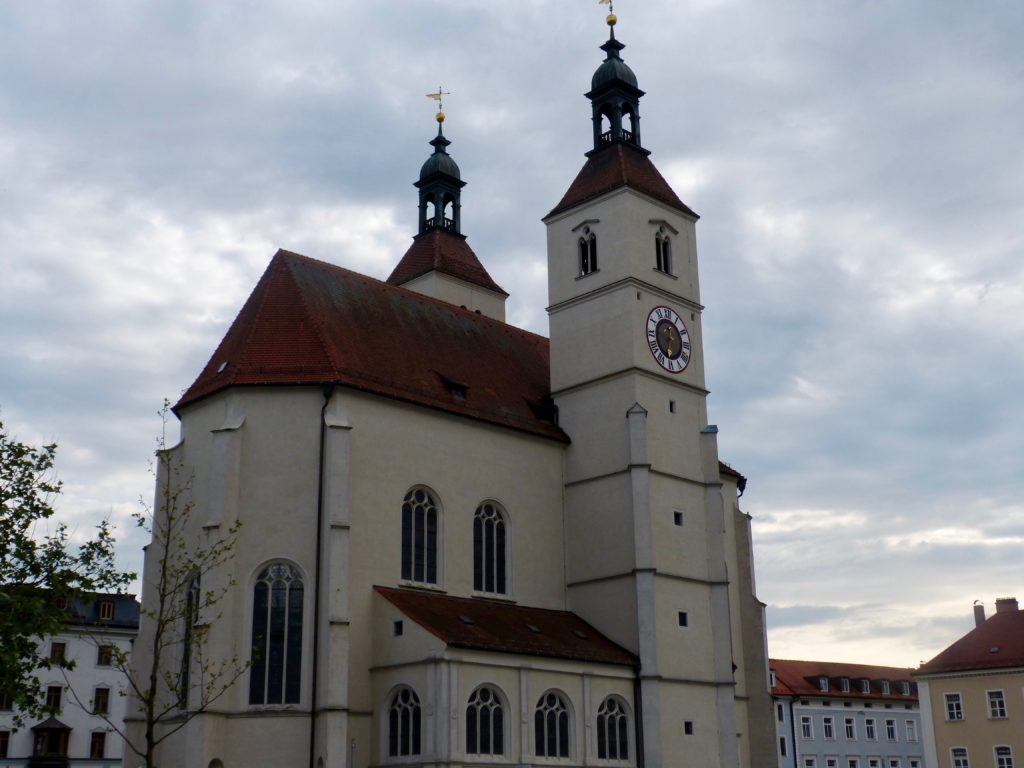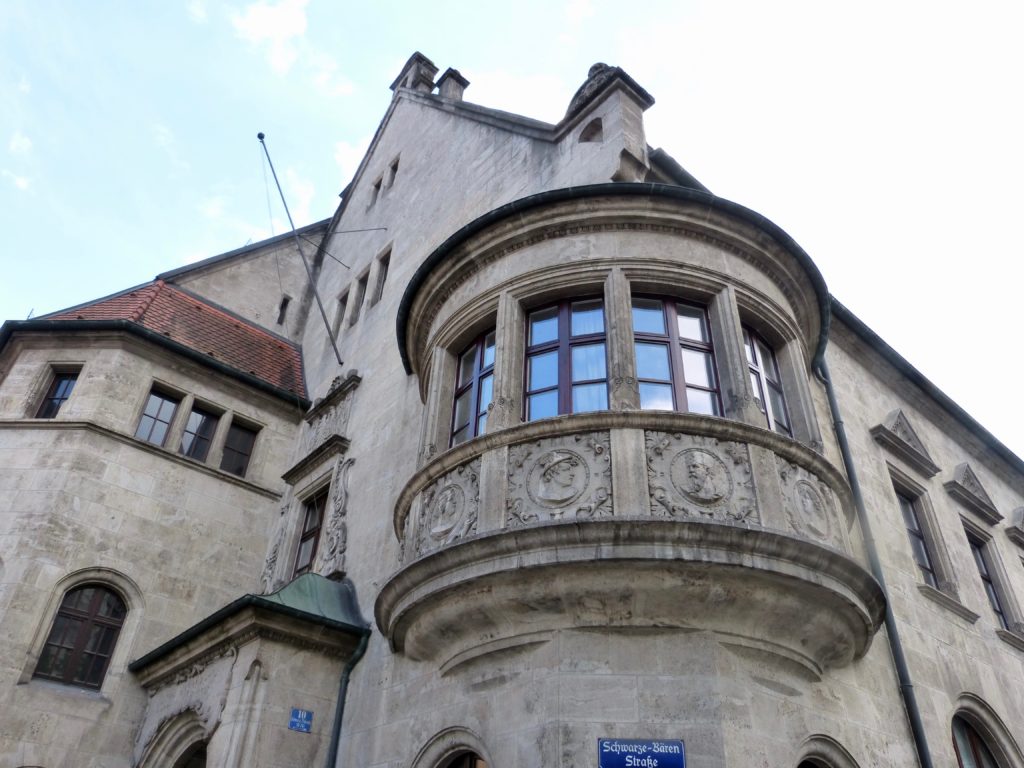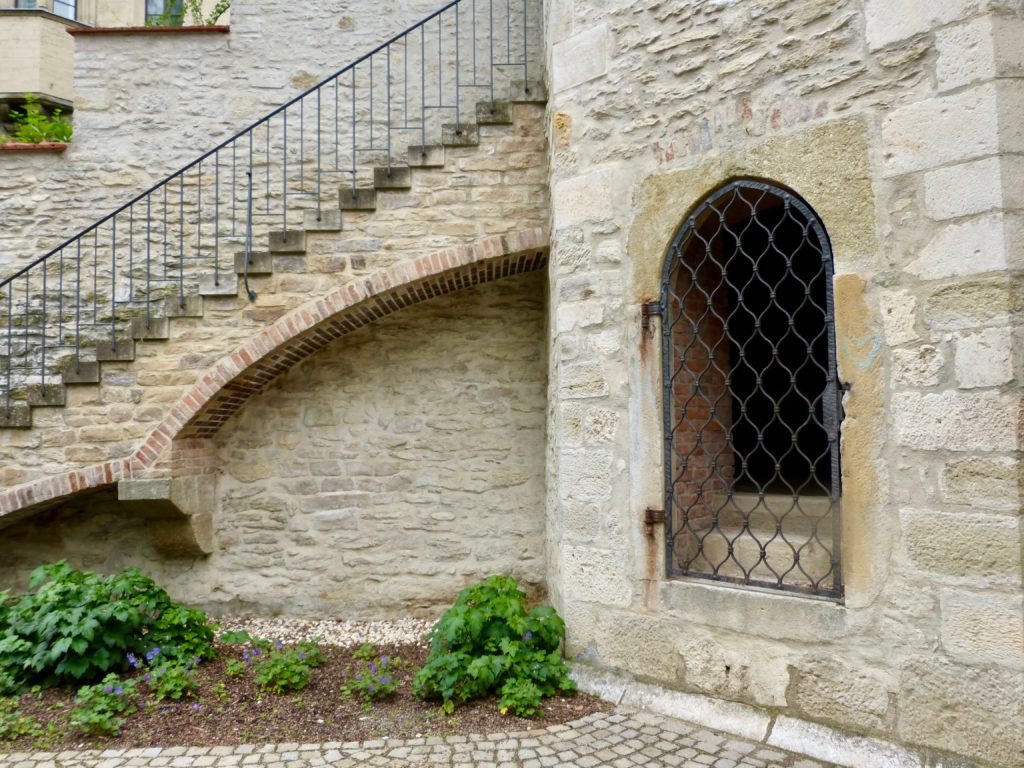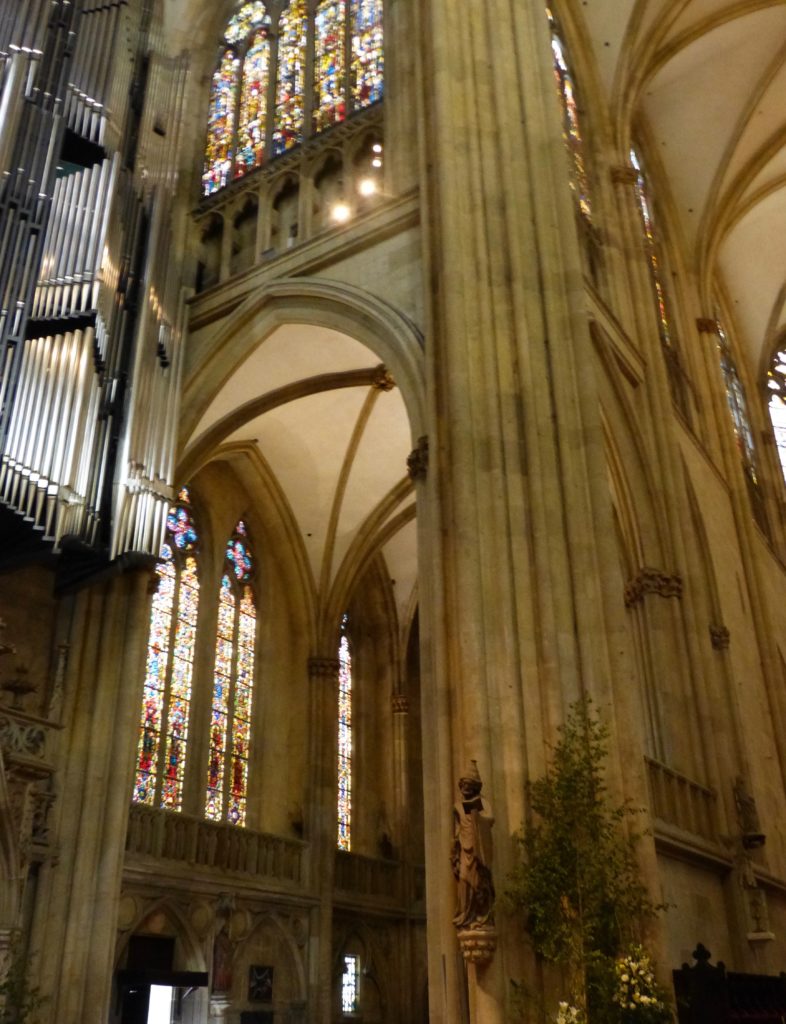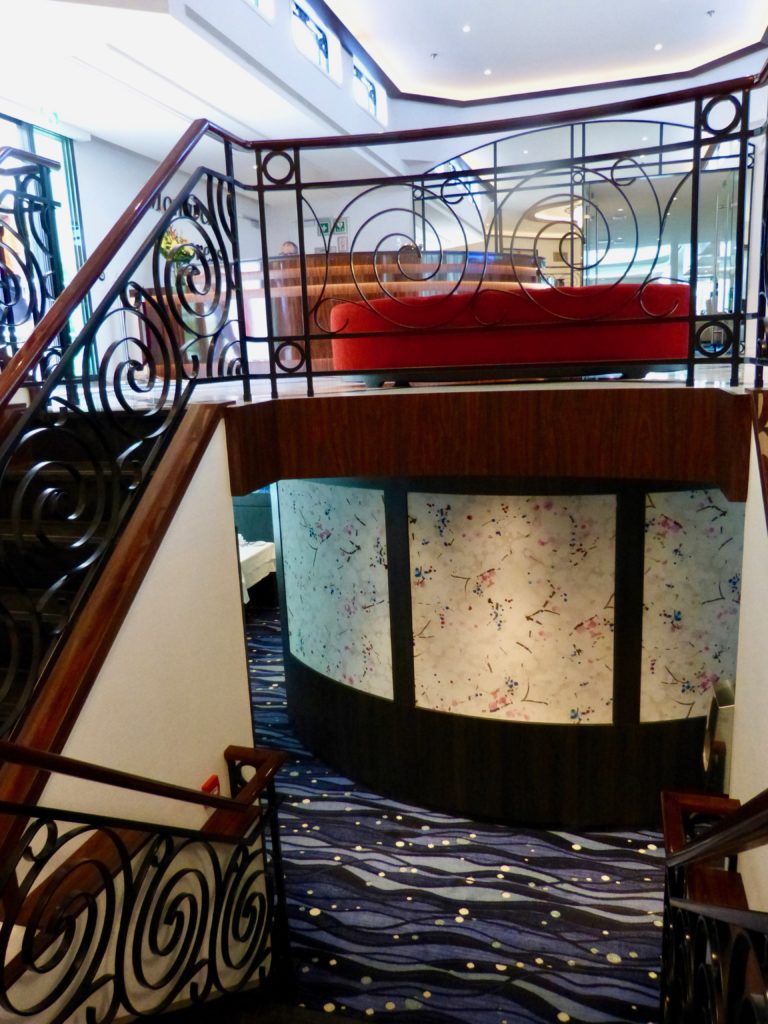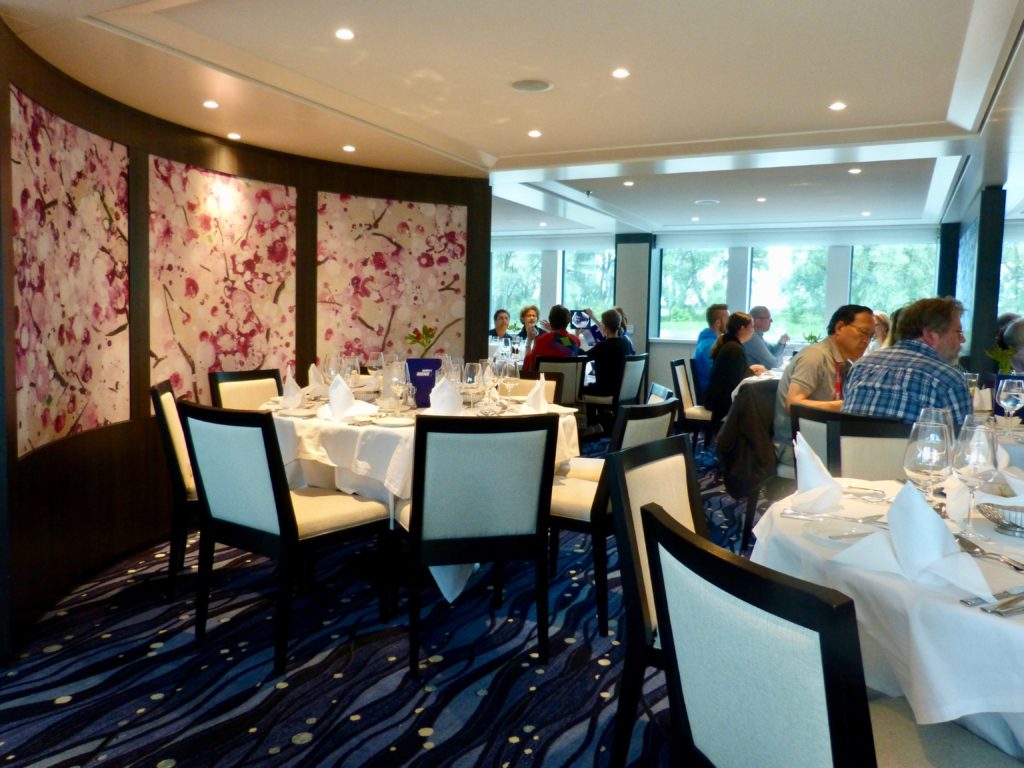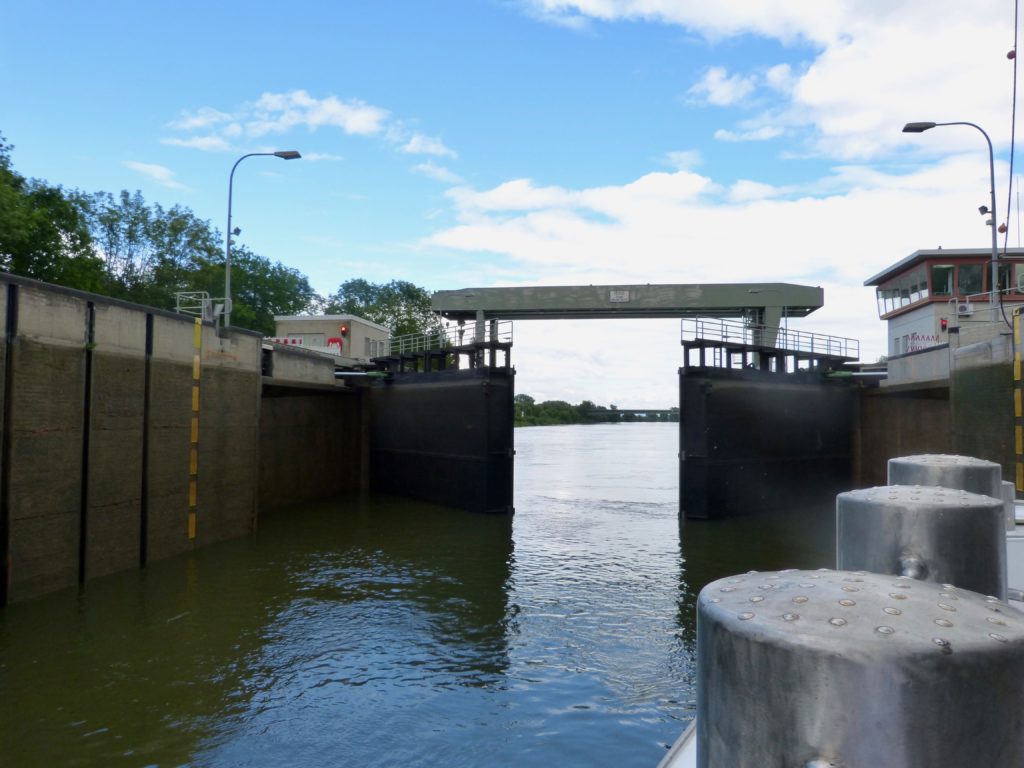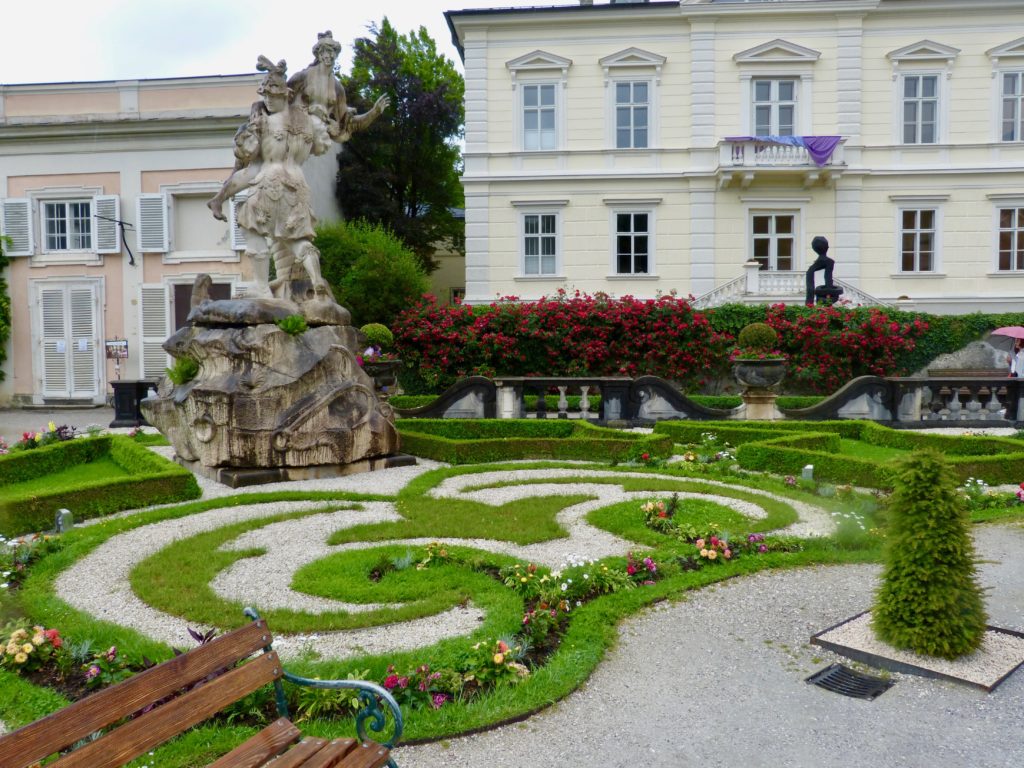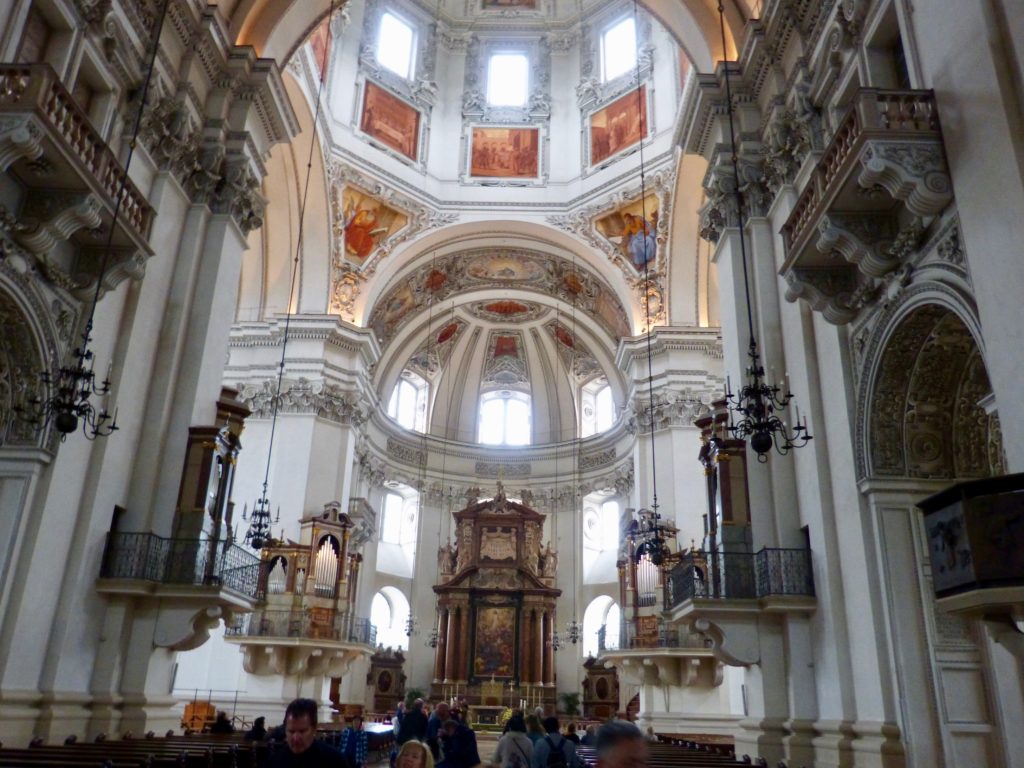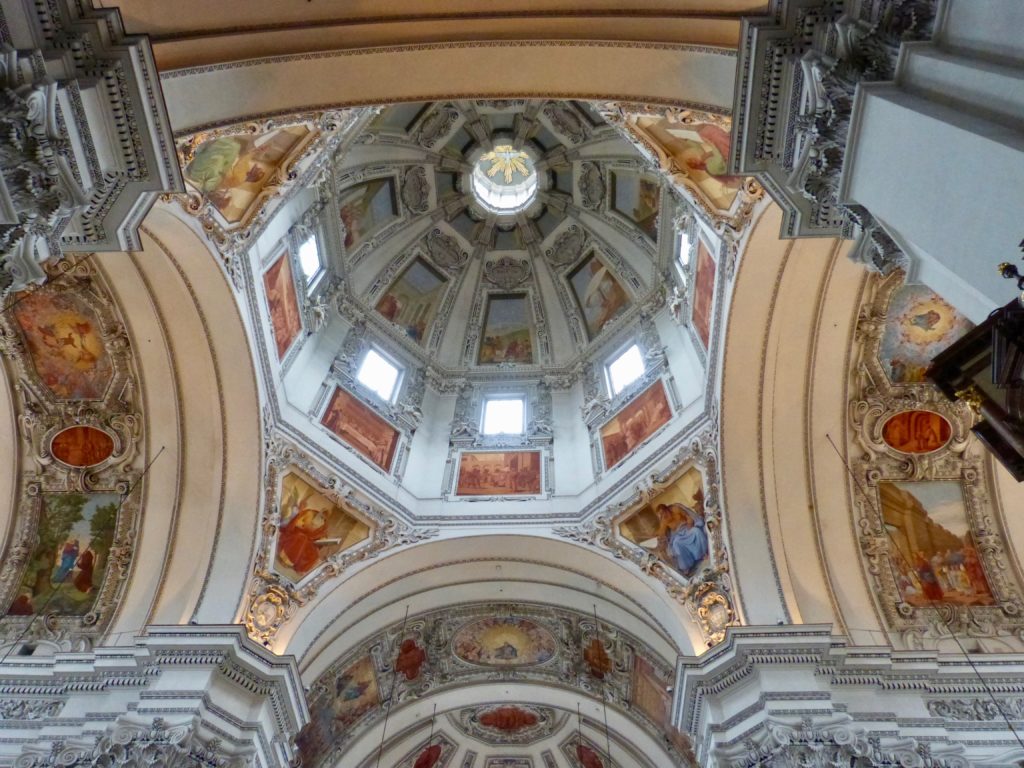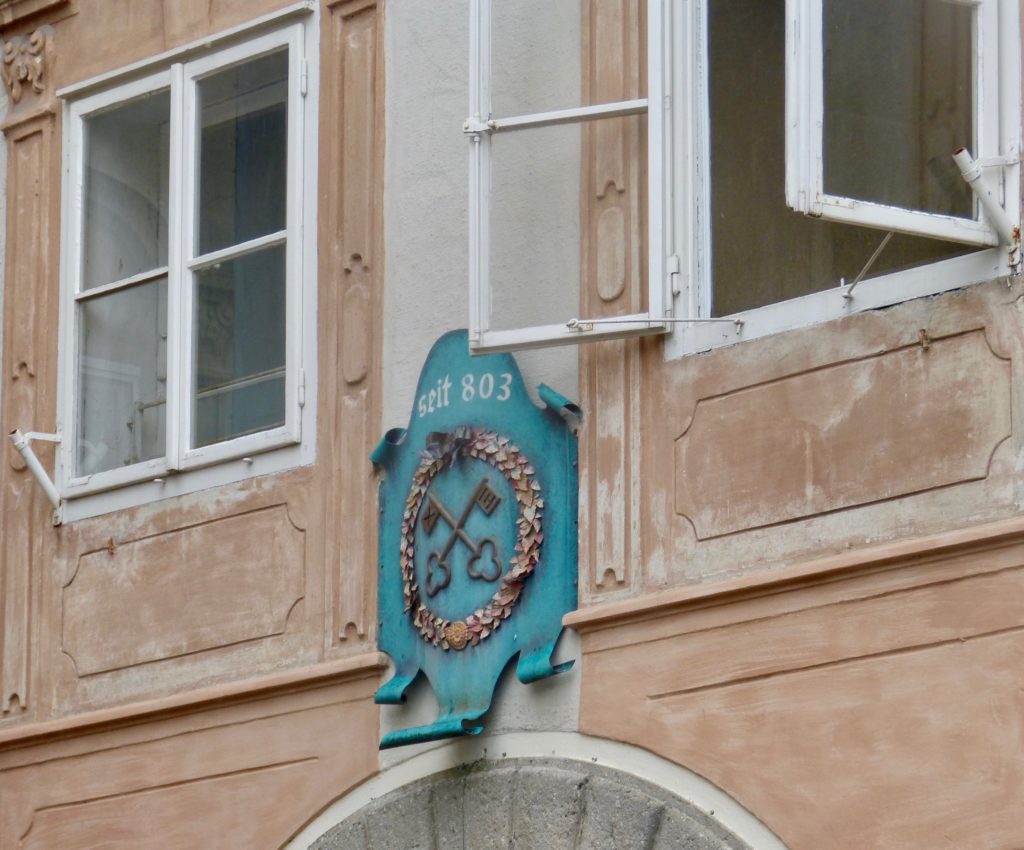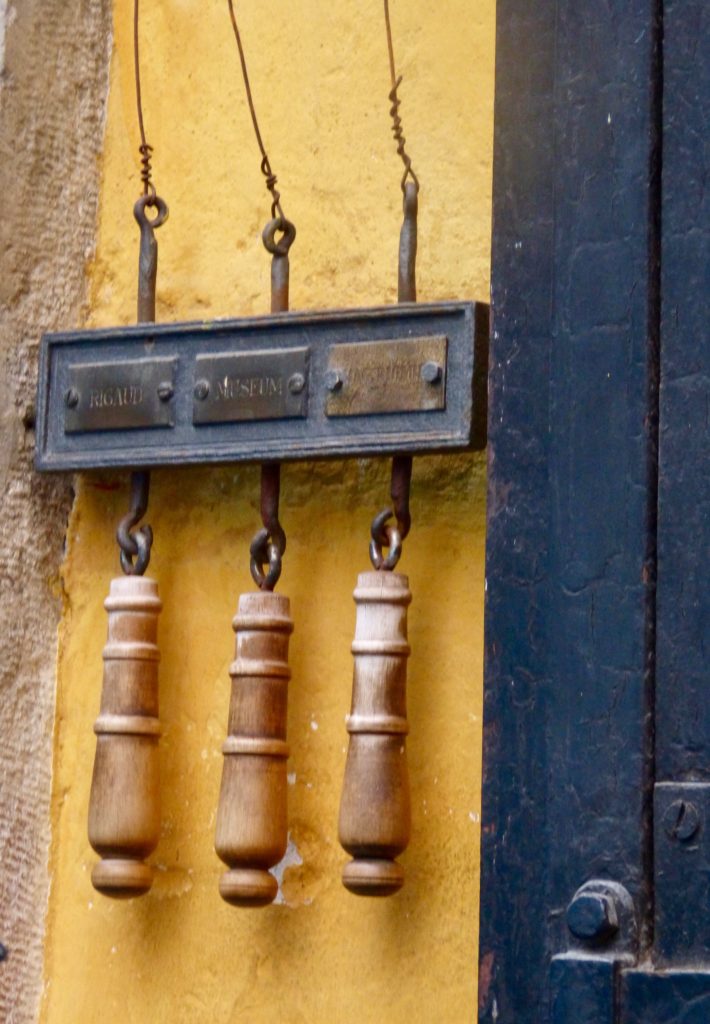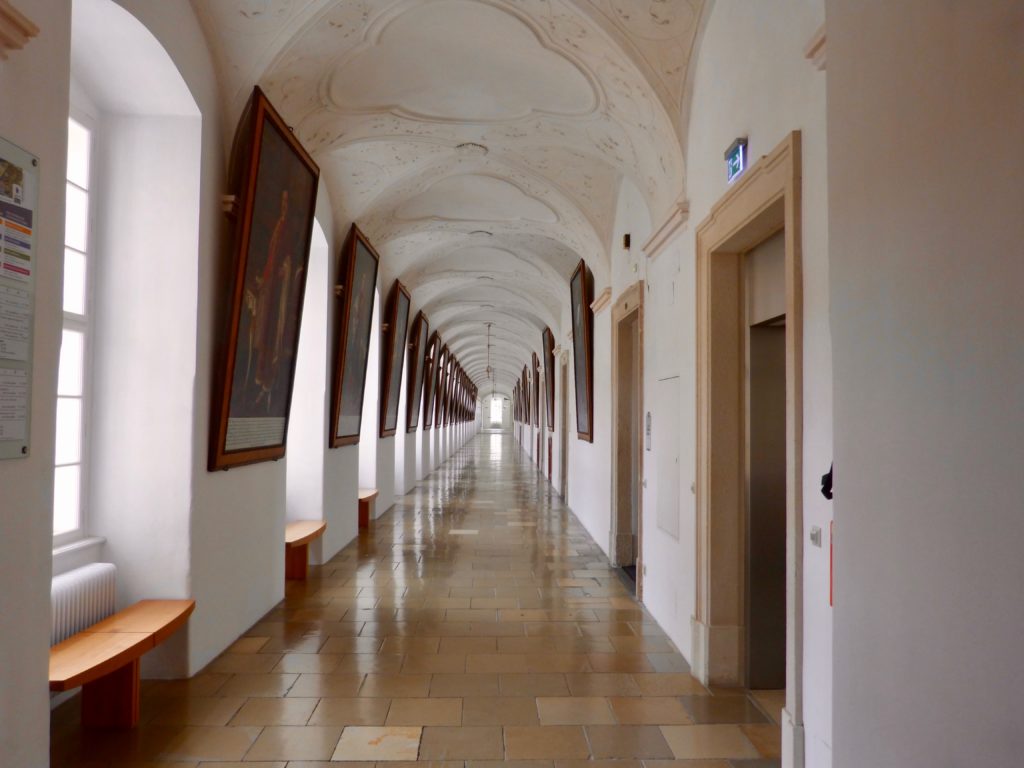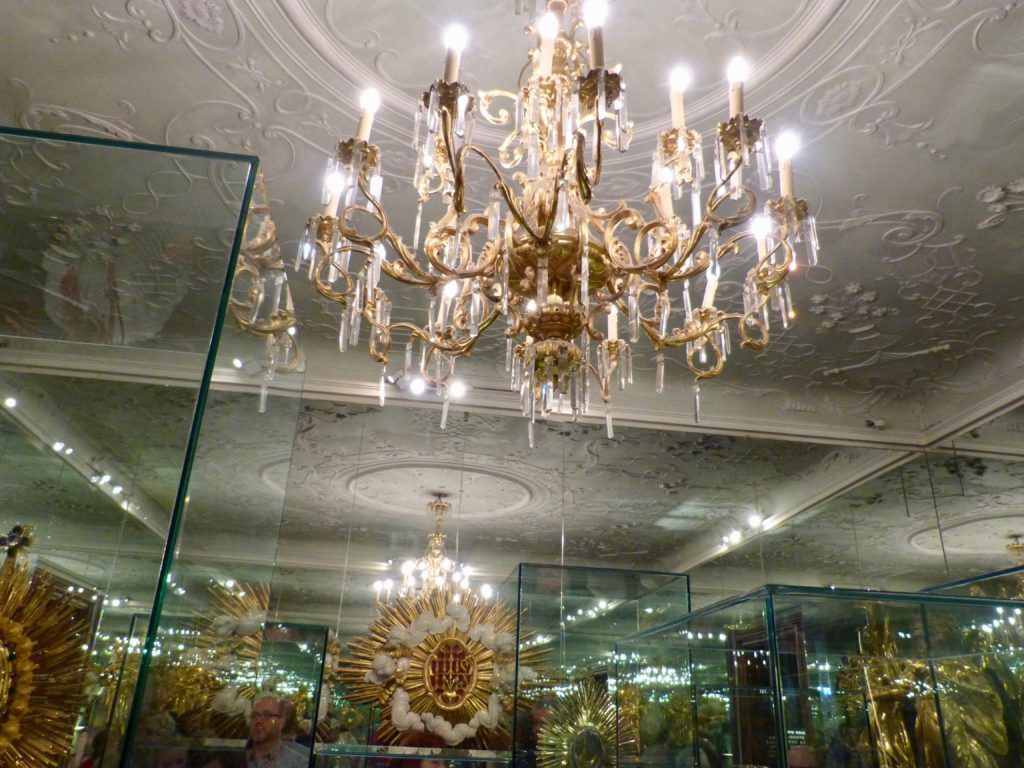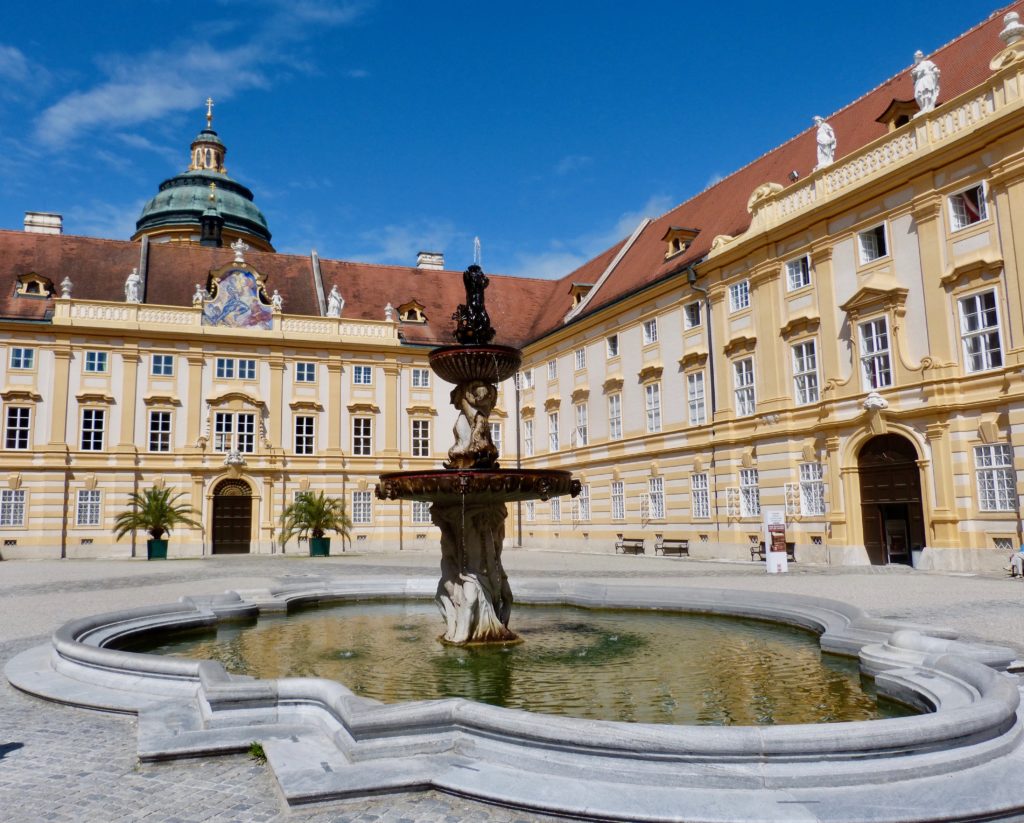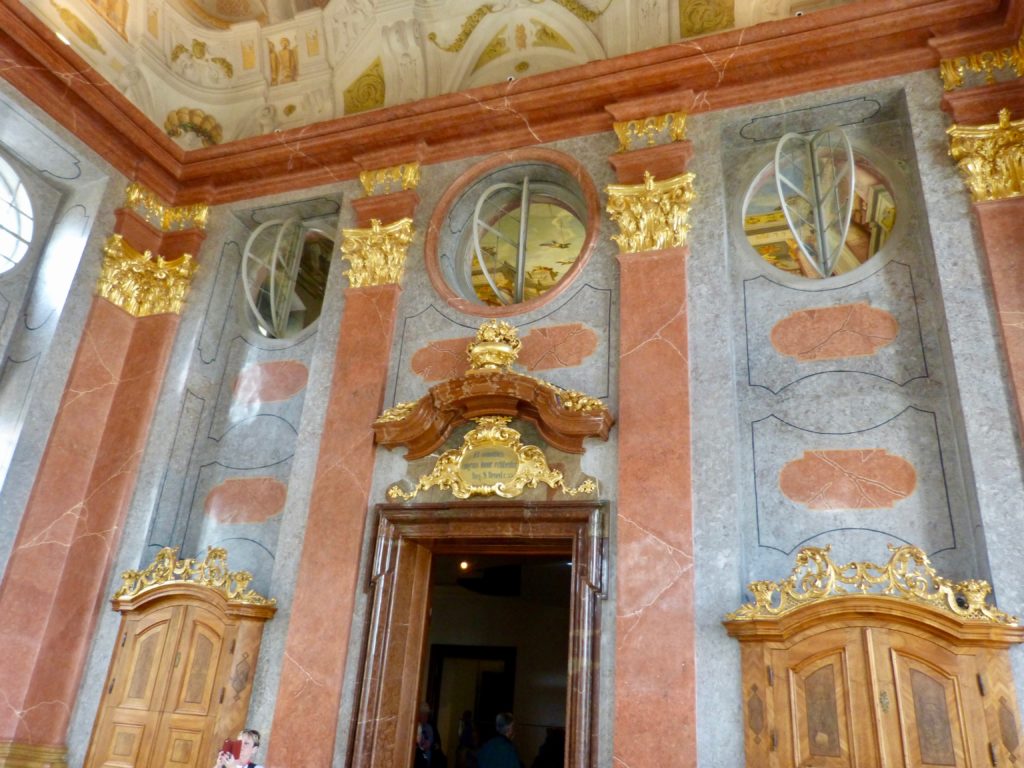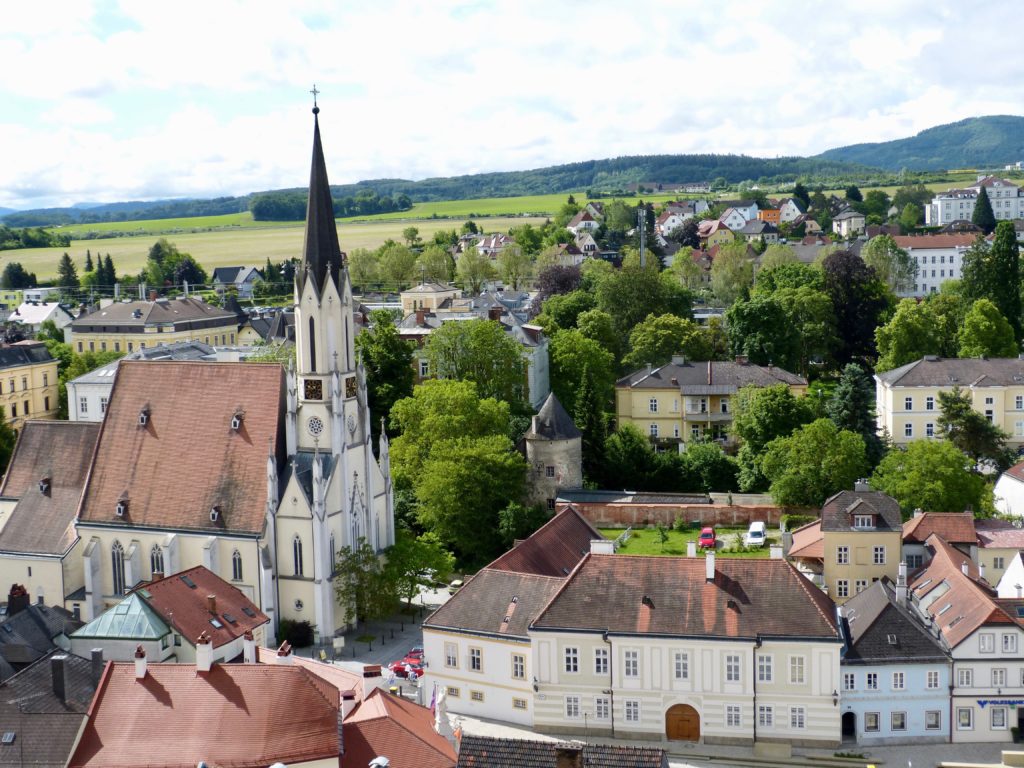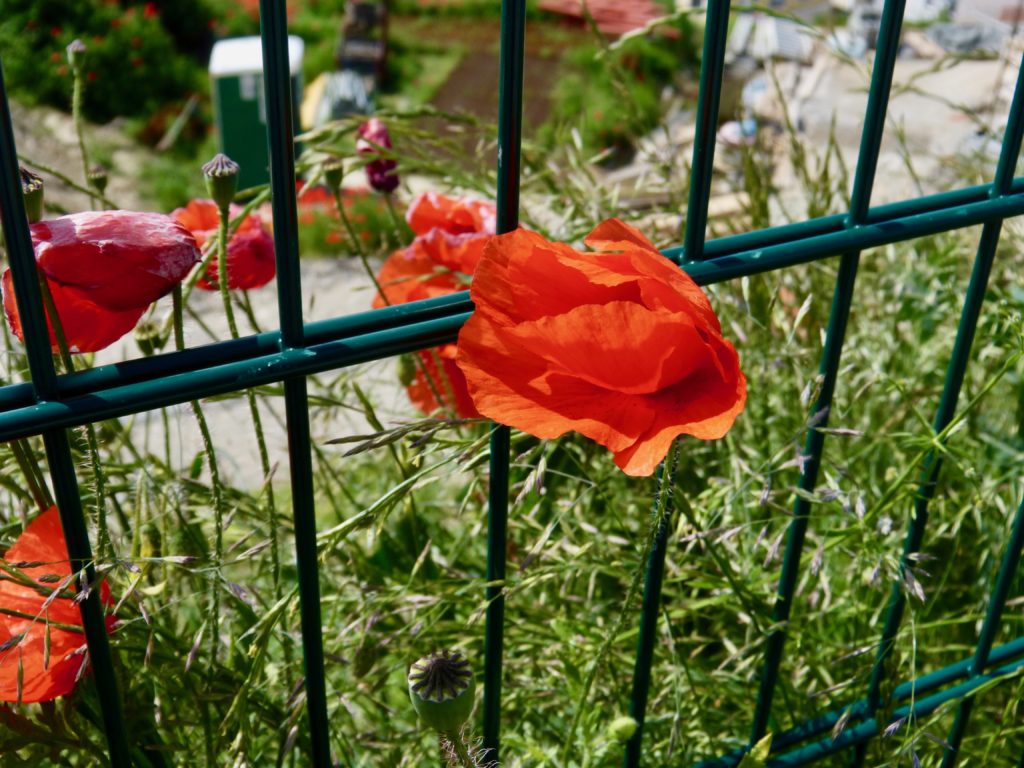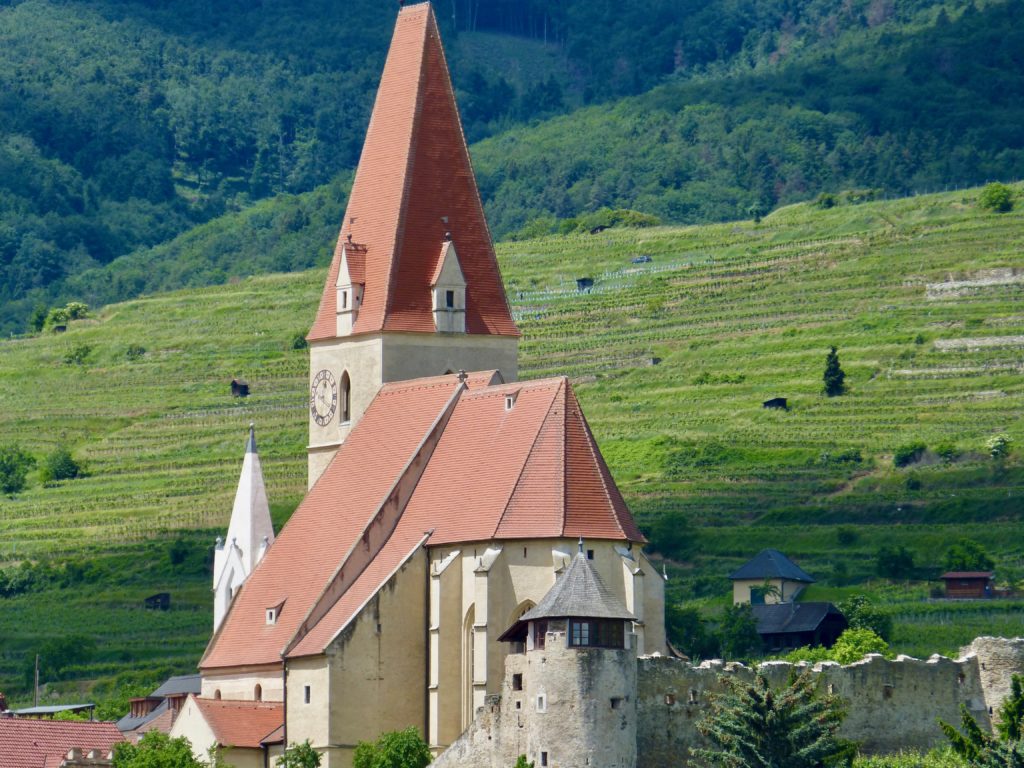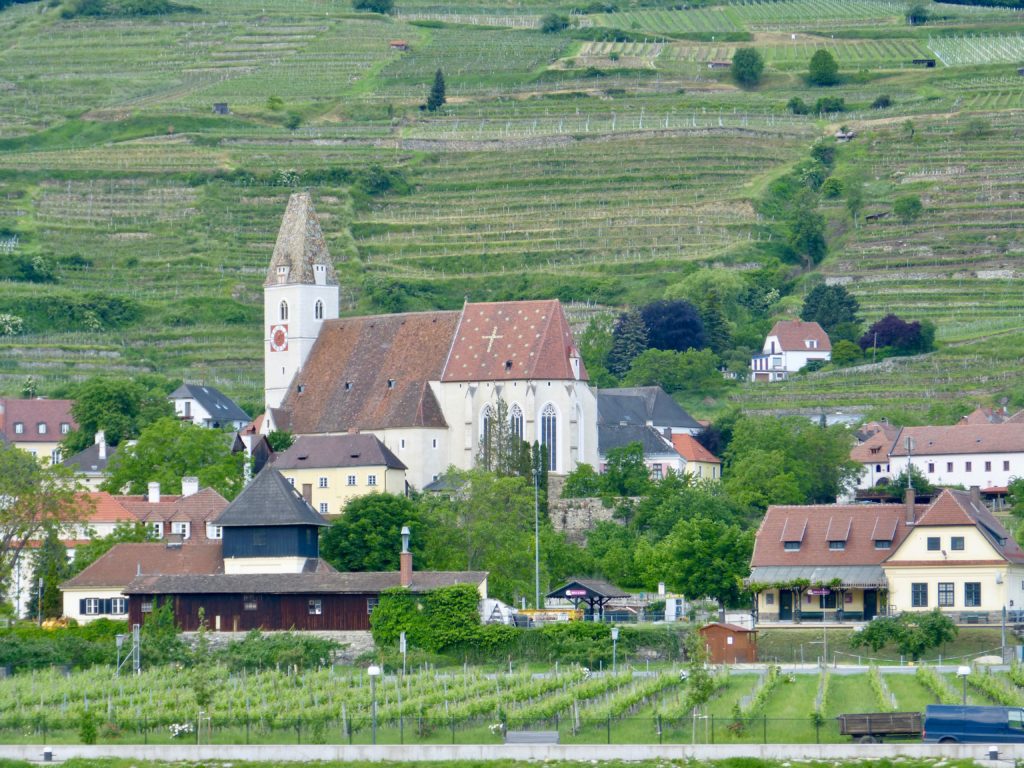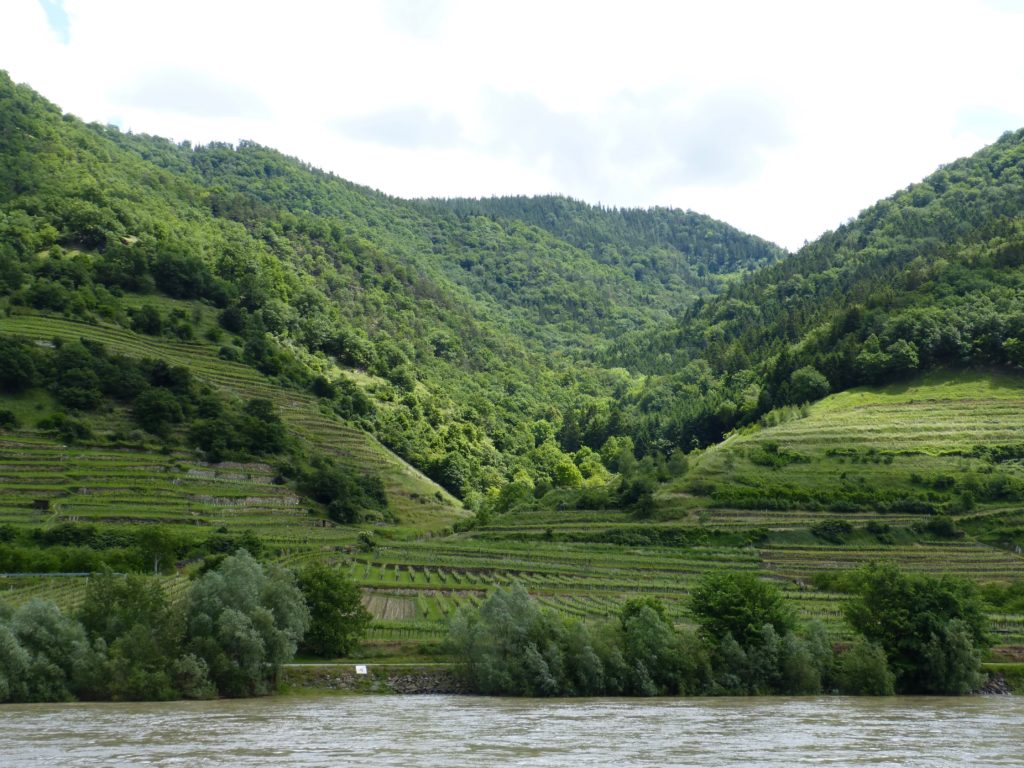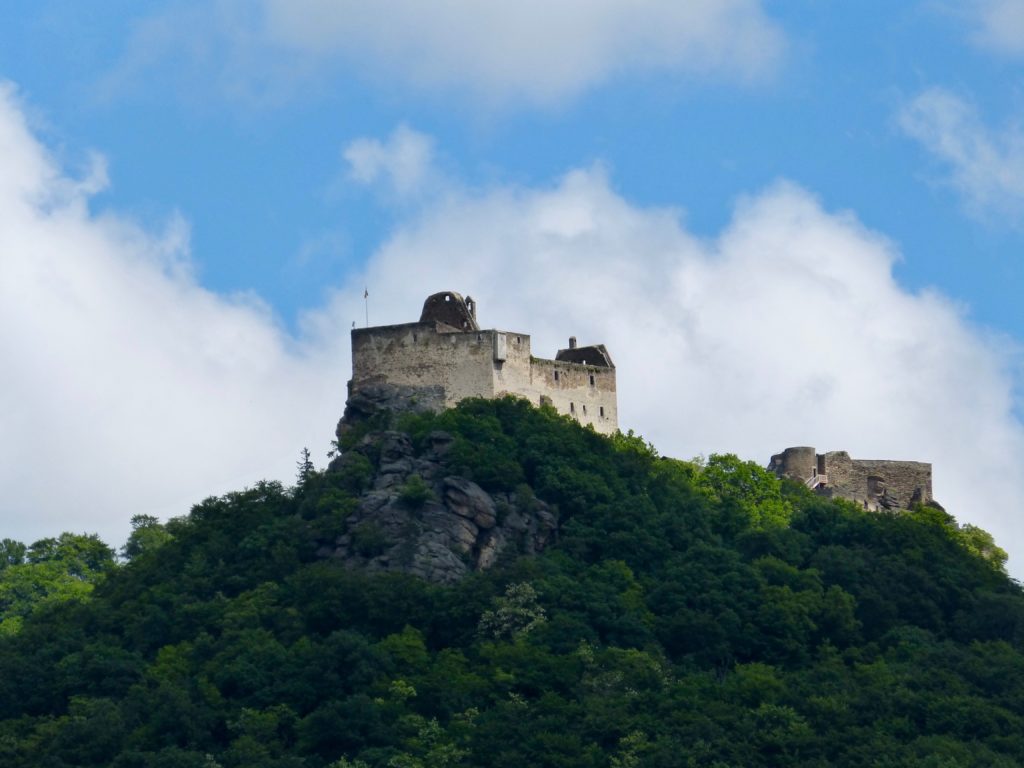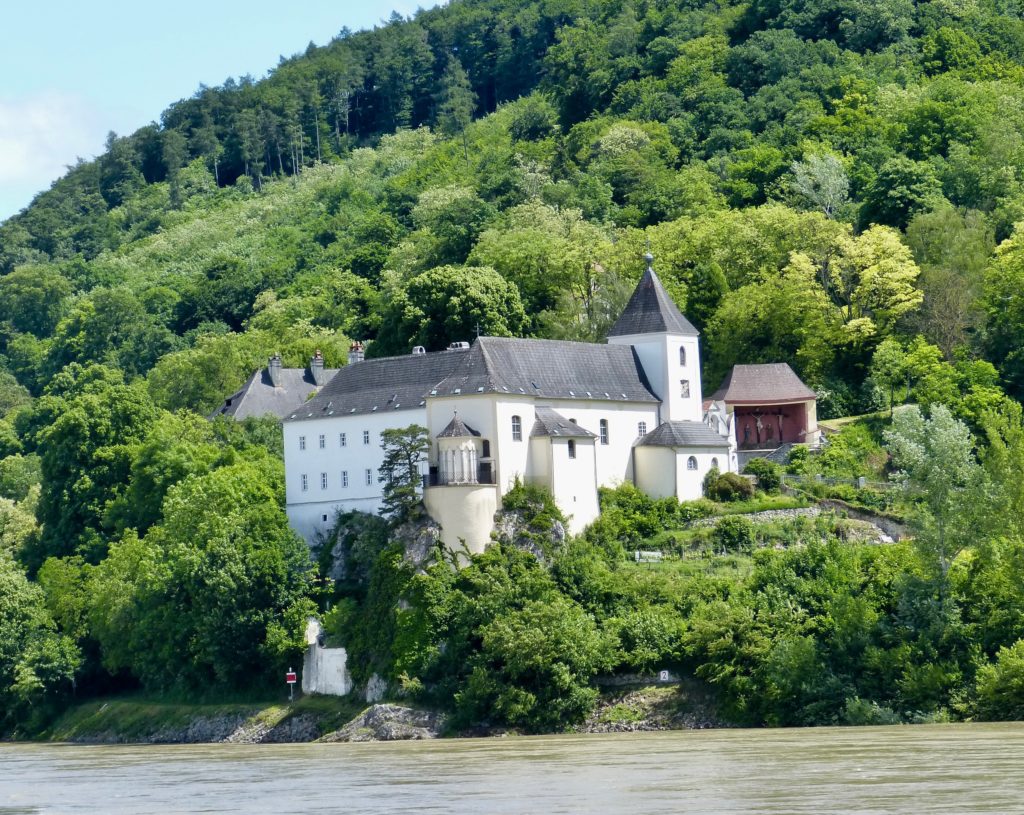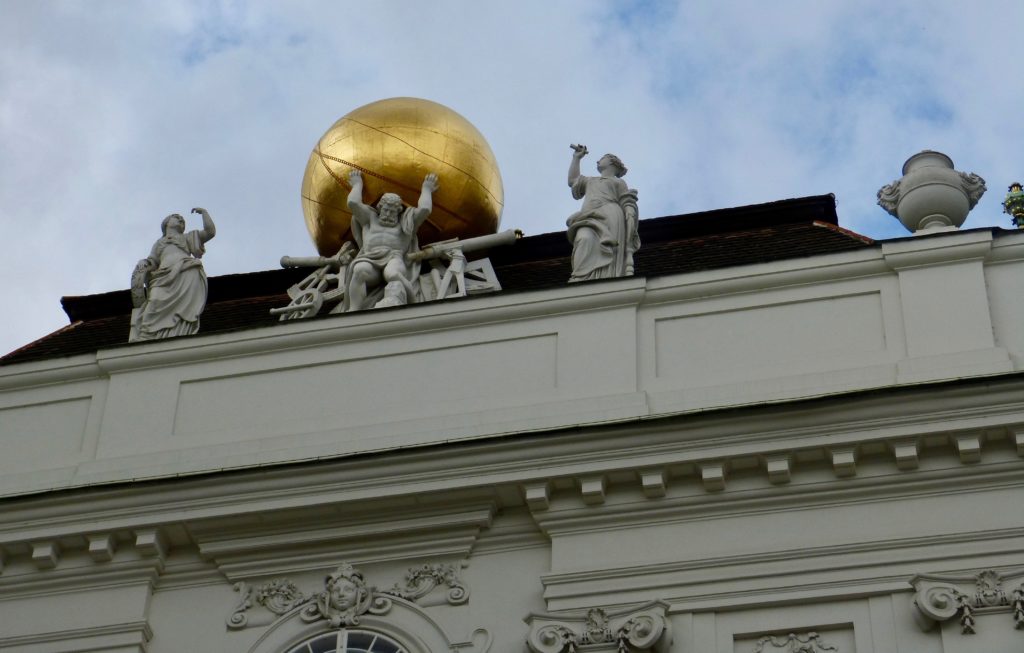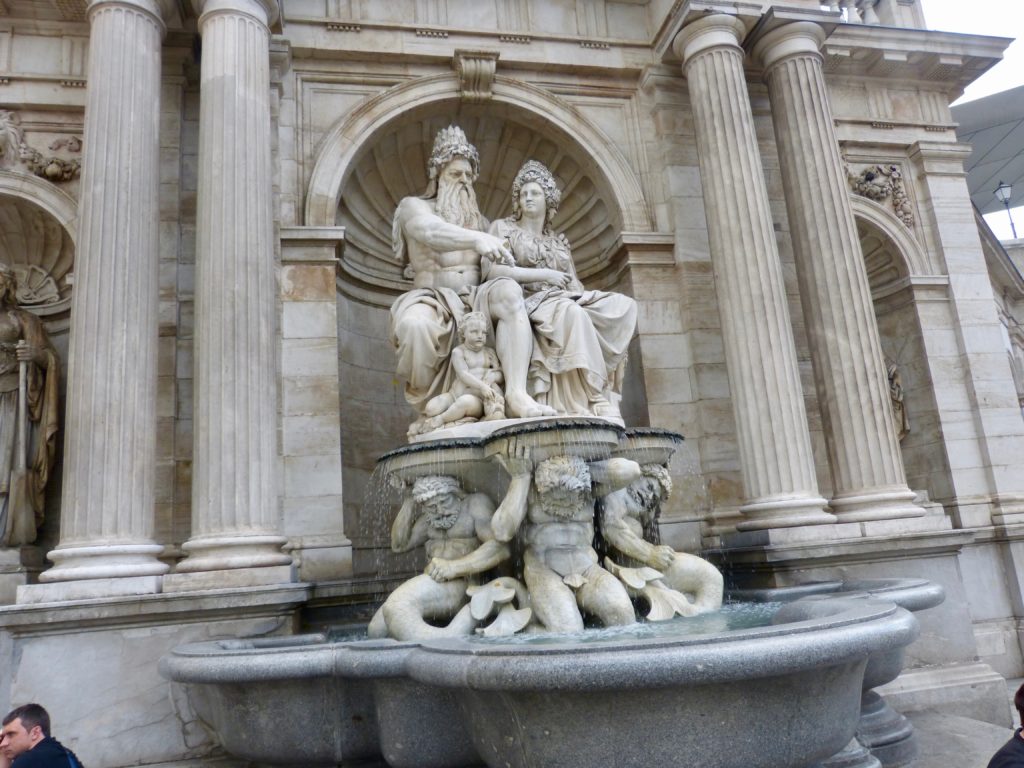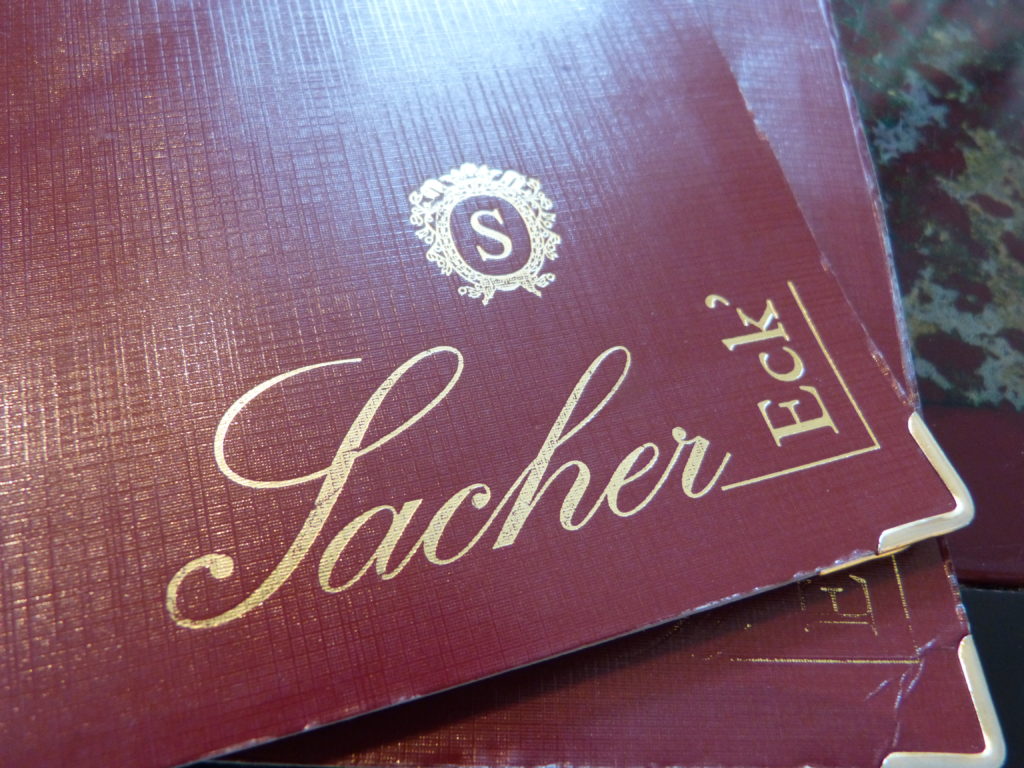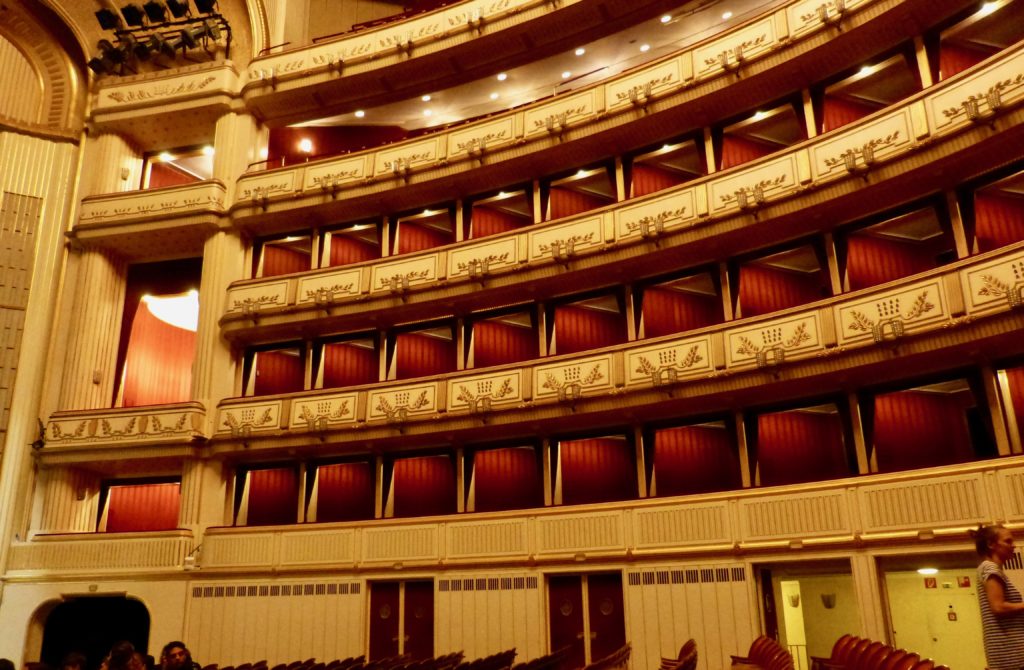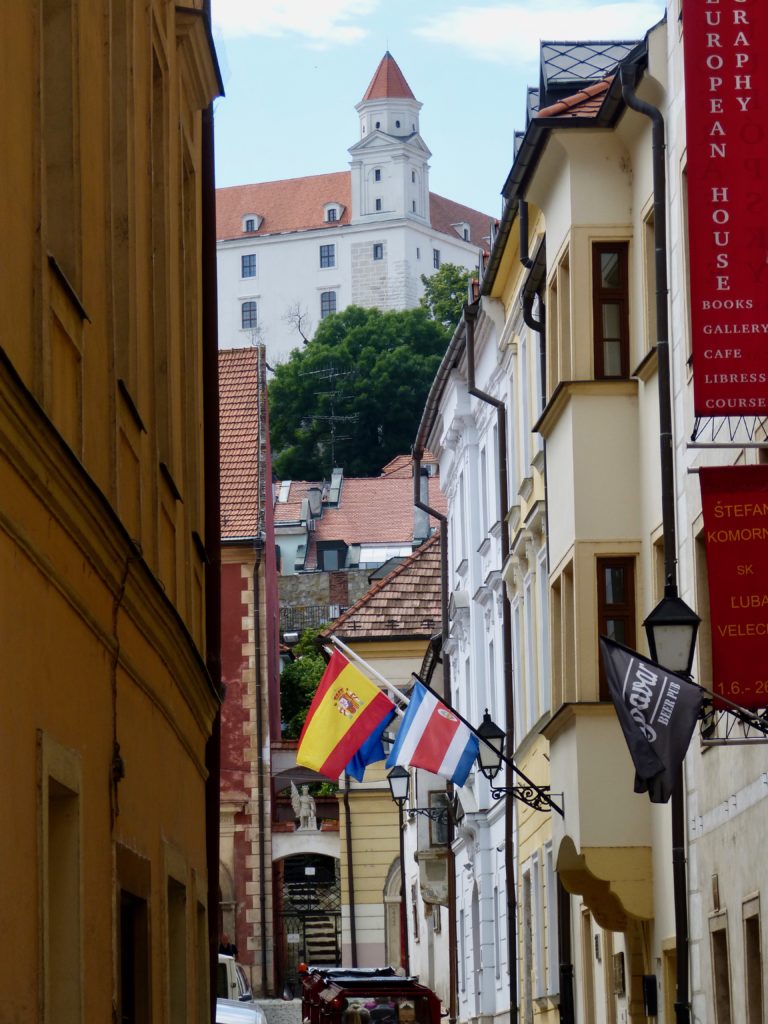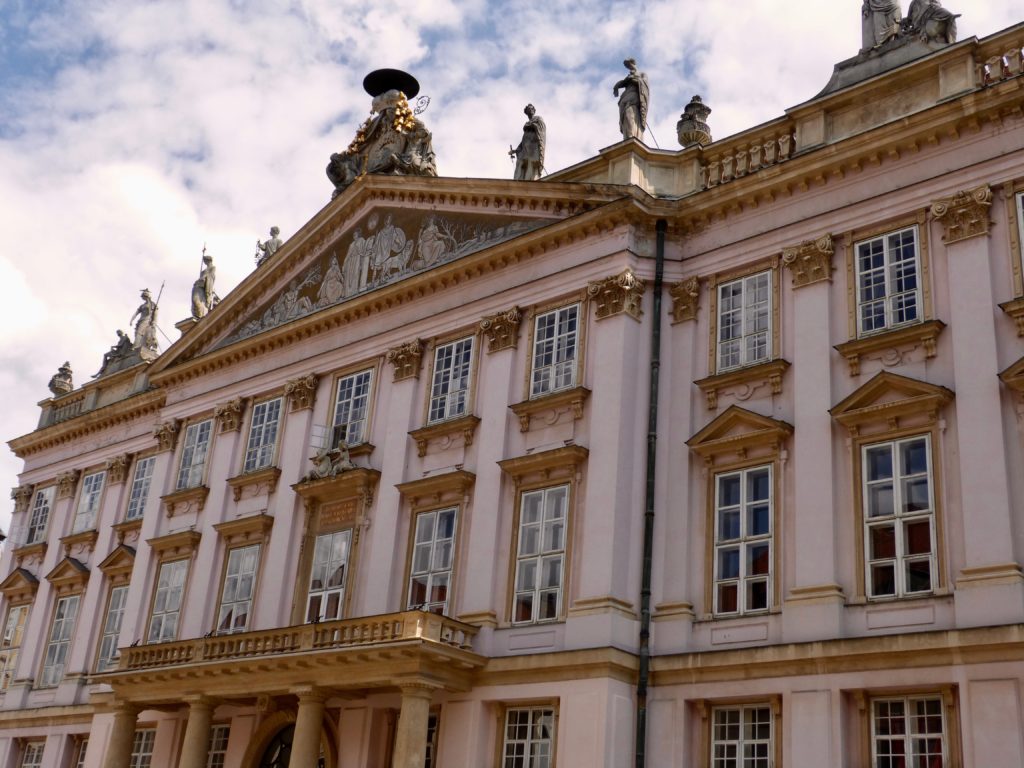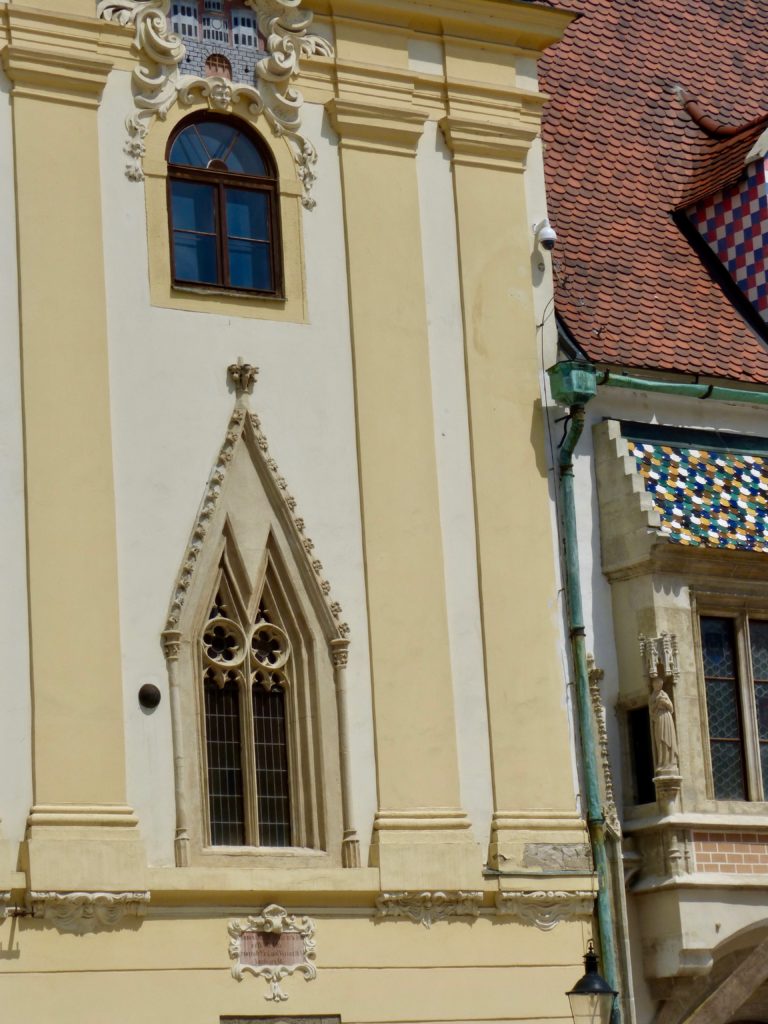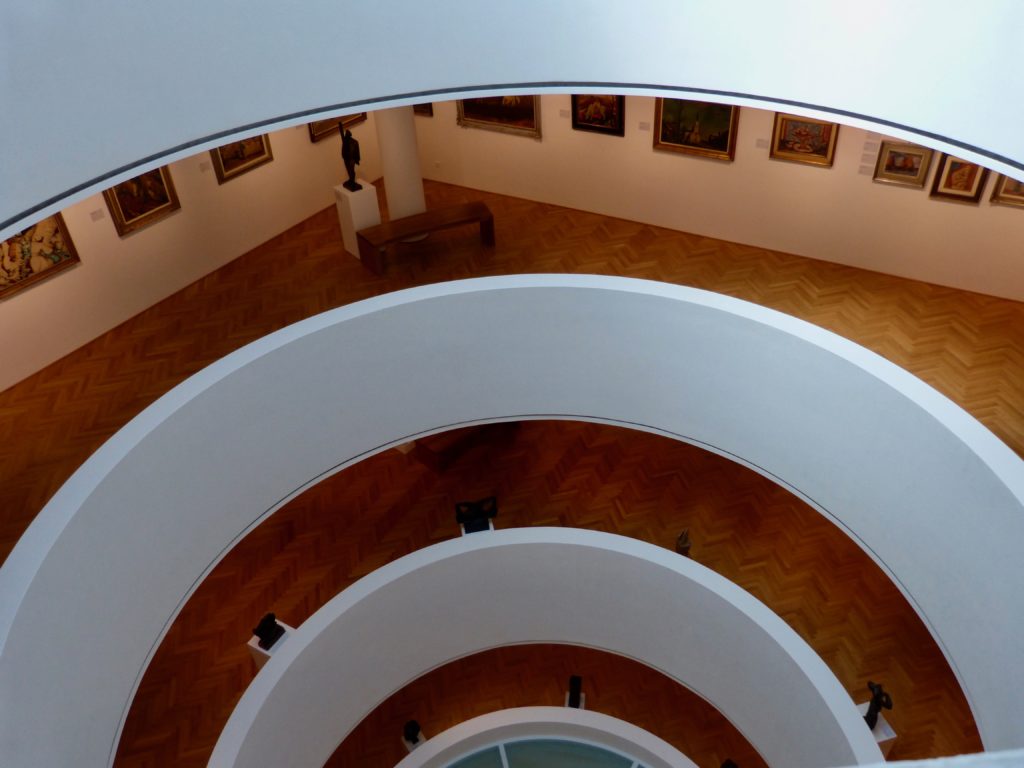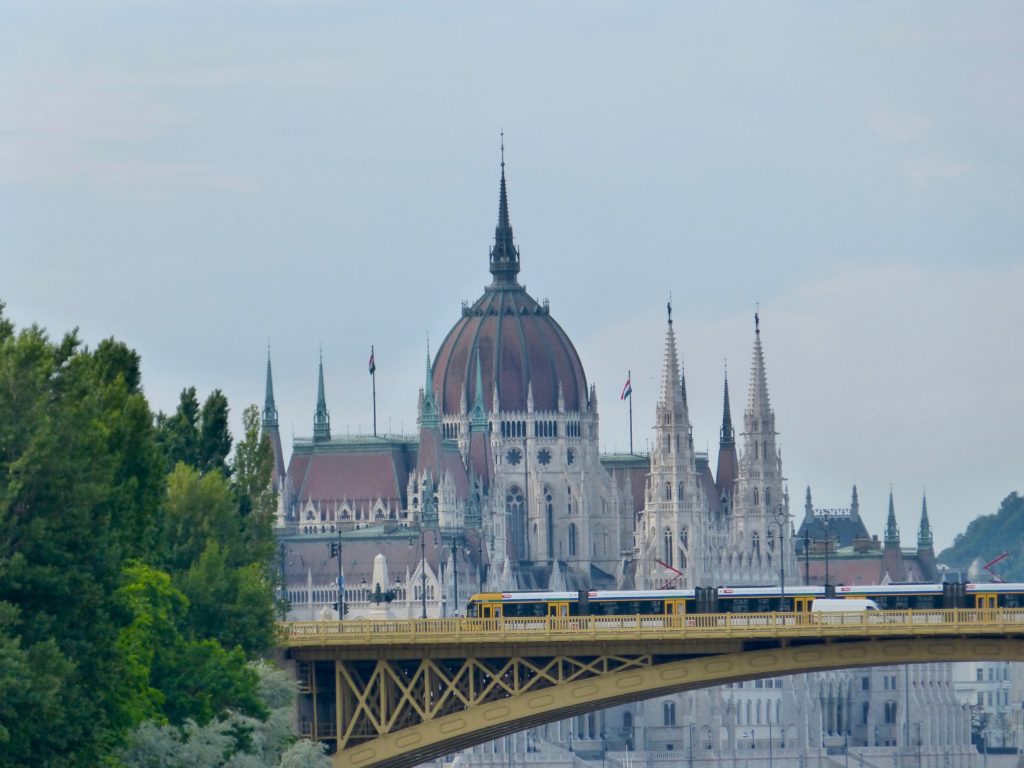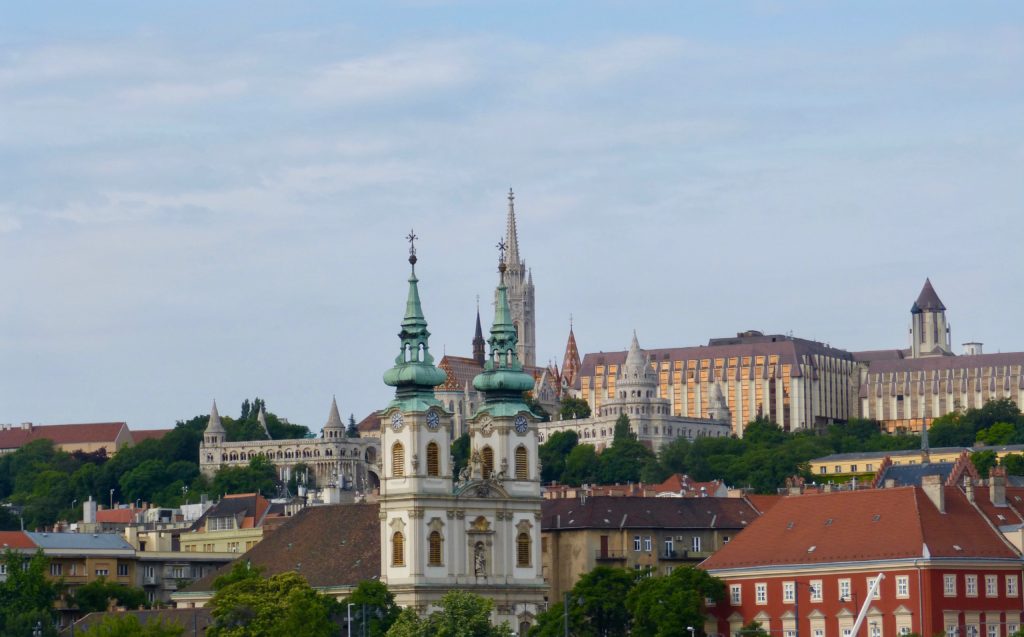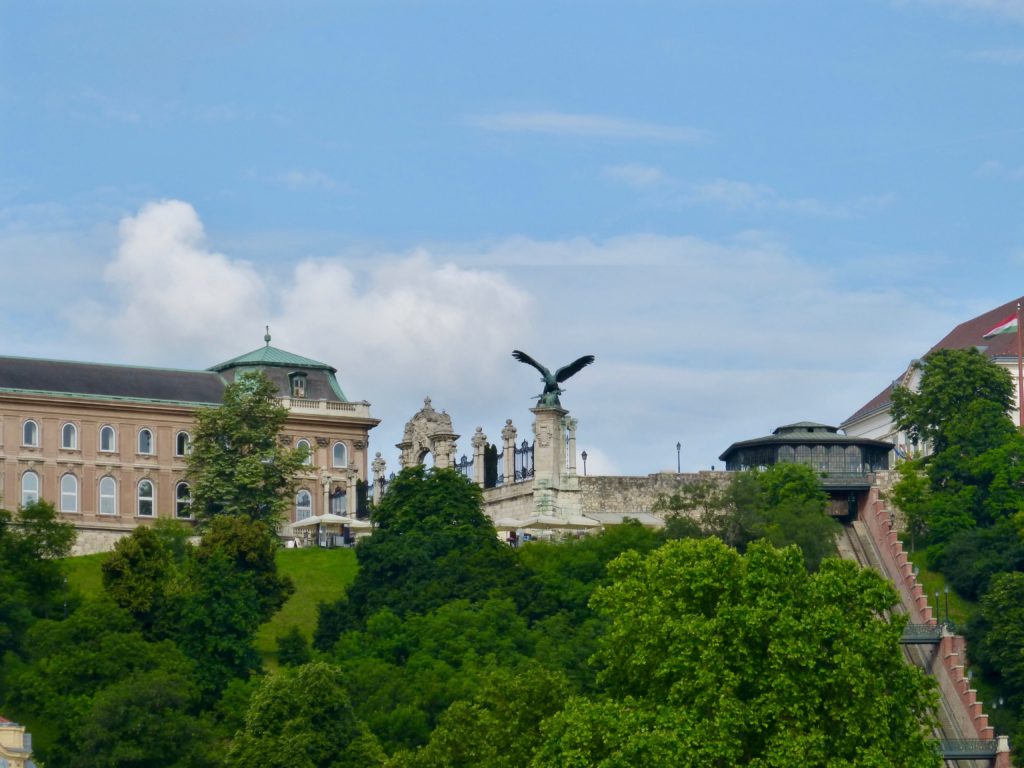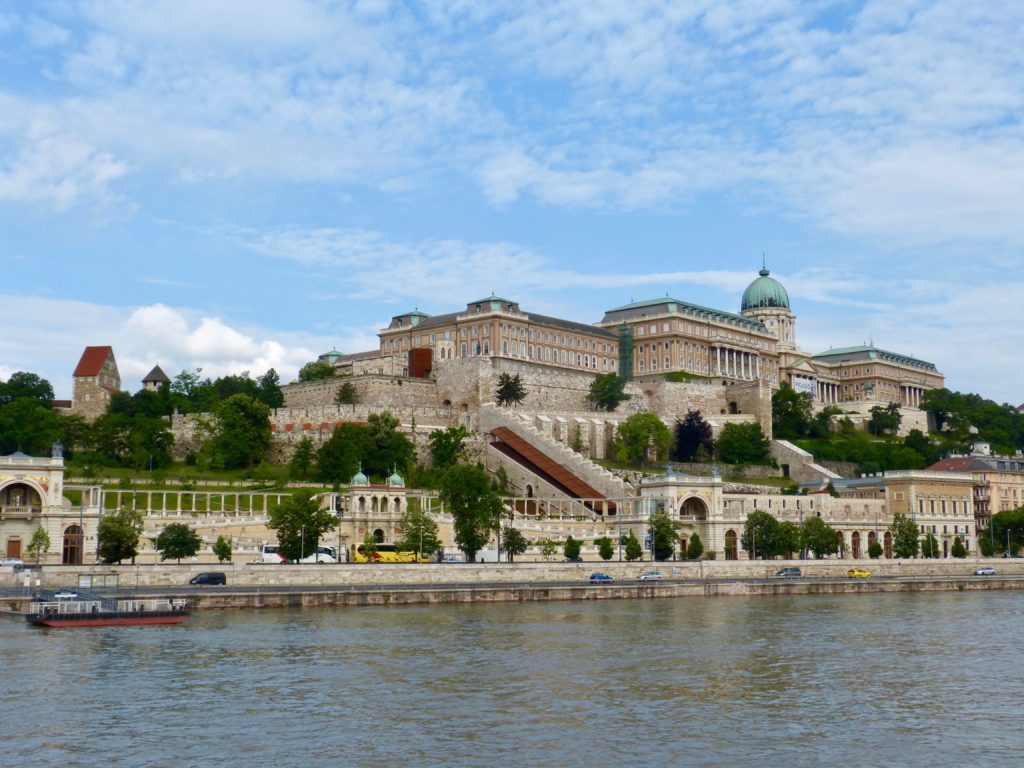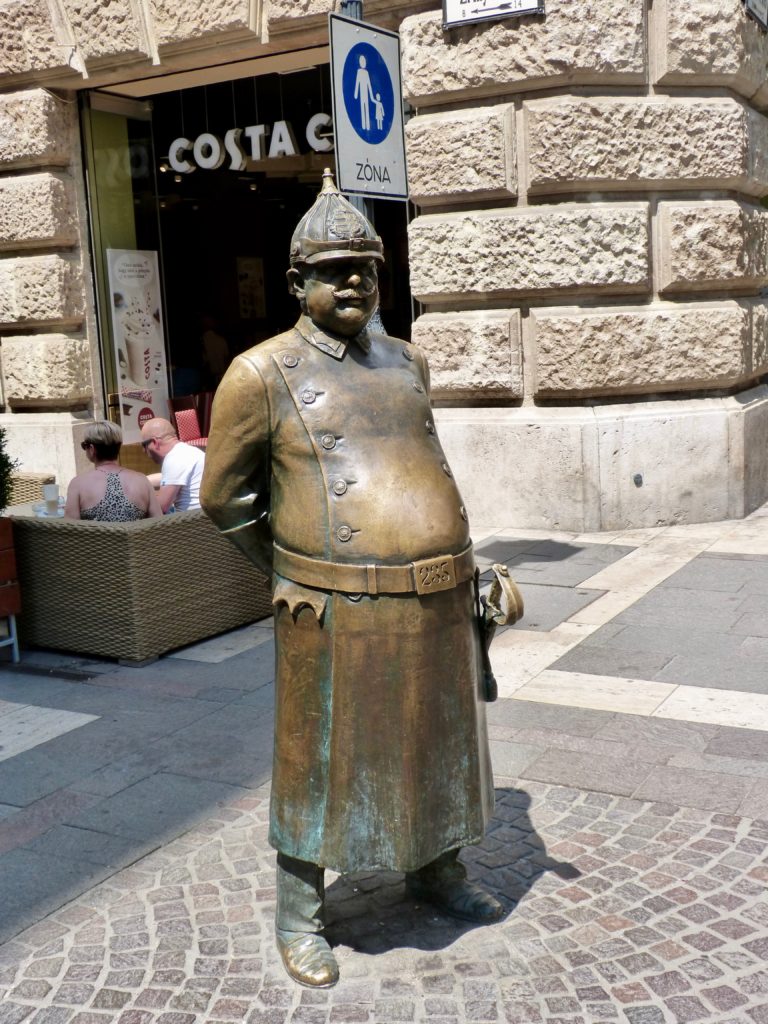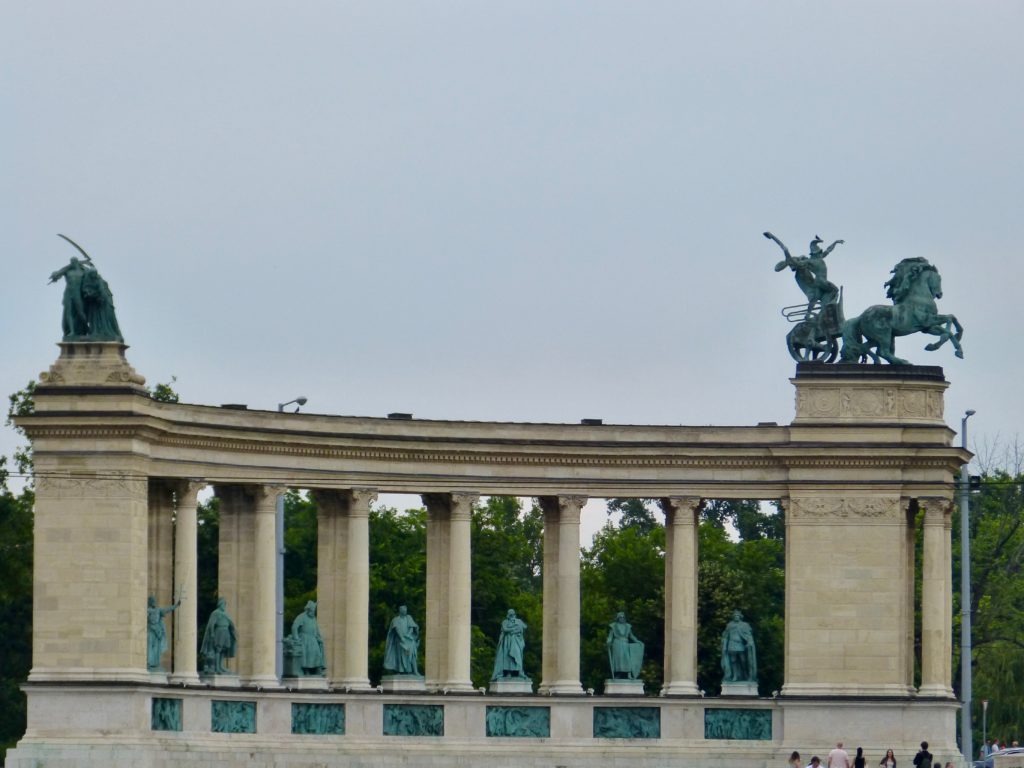This was my first river cruise! I had heard a lot about them but still had lots of questions.
First off, let’s talk about the price. River cruises definitely seem more expensive than oceanic cruises or rather they cost more upfront. But when you compare what is included in the price, then, the price difference disappears.
On a river cruise, you have more inclusions: wine and beer are generally included with your meals, as is the WIFI connection and your excursions. Those are big ticket items on oceanic cruises.
The size of the ship is obviously different, while oceanic cruises can welcome between 2 and 5 thousand guests, a river cruise vessel will hold an average of 150 passengers.
That translates into a lot less walking between your stateroom and the main gathering areas. There usually are three levels on the river cruise ship, plus a top outside deck, one main dining room and a separate bar/snack/lounge area. There is usually a small exercise room and a small hairdressing salon, there may even be a small pool and/or hot tub.
Speaking of small, the staterooms are not large either, yet they have everything you need. Having a window or some form of balcony helps…
The advantage of river cruising is that you dock close to the center of the cities you will be visiting, so no long bus rides needed to get to the attractions. You can often walk off the ship and into town. Also sailing on a river you means always have a view of your surroundings: hills, villages, castles, vineyards…
Truth be told, the pace is slower on a river cruise in good part because there are so many locks to go through. At times you will leave the ship in the morning and join back with it later, further down river, as they will continue moving while you explore, to save you some of those locks.
Mind you, more and more lines offer excursions that are more active such as bicycling rides and hiking, for the more energetic passengers (bicycles are provided free of charge). As with oceanic cruises, it is important to choose a line that caters to your interests and energy level. Look out for themed cruises, like wine, or music, or gastronomy…
With such a smaller number of passengers you will soon know everyone as well as the staff. This can be a blessing or a curse. Traveling with friends can ensure you have like-minded traveling companions, but usually the mood is cheerful and you quickly find fun people to mingle with. We were very lucky on this trip as we met up with a great group and although we did not spend every minute together, we were always happy to meet up at supper time to exchange impressions of the day over a great meal and a nice bottle of wine.
One last general comment before I start with my story. The time of year/ weather matter for a river cruise. If you choose to travel in August after a dry summer, the rivers may be too low for the ships to sail, so they will remain docked and you will be ferried by bus to the various planned ports of call… not the same experience. On the other hand, in early spring if there has been a lot of snow melting and rain, the rivers can be very hight, thus making it is a challenge to pass under some lower bridges… Although they can remove everything from the top deck and even lower the command post, it can impact your cruise as the captain may need to hurry before the river swells too much thus skipping some activities or shortening some stops.
The first two rivers to “host” river cruises were the Danube and the Rhine. A variety of other options have since been added, but I opted for the Danube for my first experience.
We boarded the ship in Regensburg, formerly known as Ratisbon, which turned out to be a wonderful discovery as we arrived ahead of time and had time to explore this lovely medieval city. (Some people got on earlier, further upriver, after visiting Prague).
We stayed at a stately hotel which was interestingly outfitted in a modern decor: the Park Hotel Maximilian, within walking distance of the train station.
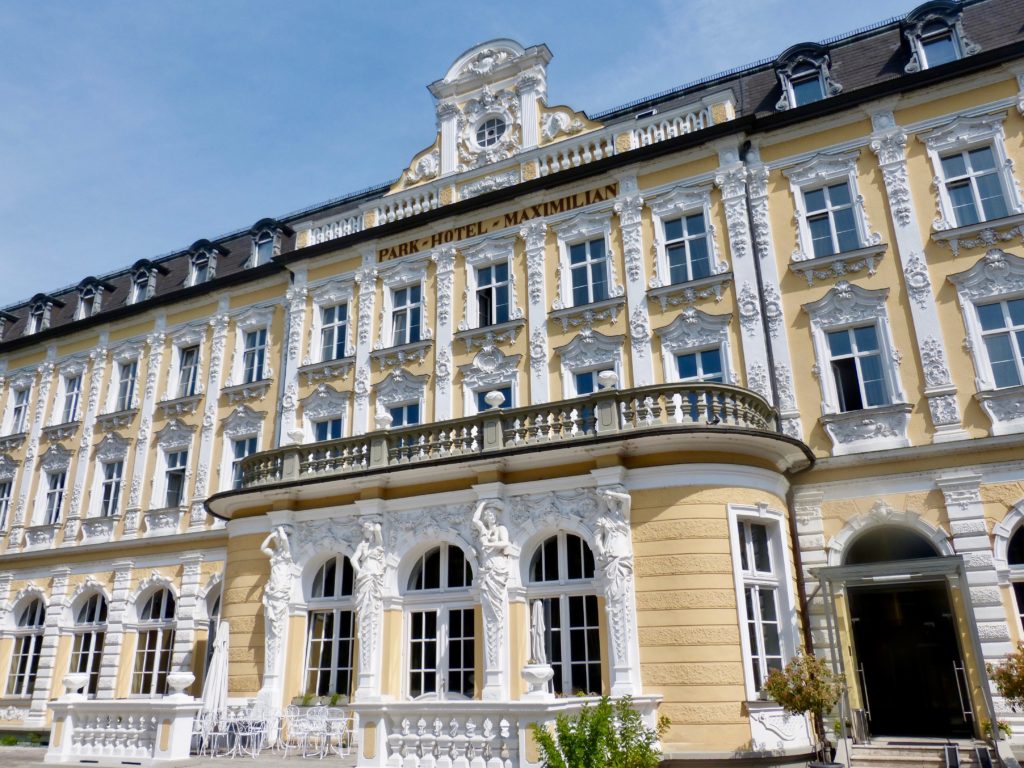
On that first day we walked around getting a feel for the place…
The following morning we set out to visit St. Emmeram’s Abbey, a Benedictine monastery founded in about 739 . In 1812 the monastic buildings were granted to the Princes of Thurn und Tavis who had St. Emmeram’s Abbey converted as a residence known from then on as Schloss Thurn und Taxis.
After walking around in the oldest part of the city we visited the Regensburg cathedral which was built between 1280 and 1520 over the site of a previous church that had burned down.
The next day we boarded the ship: the Monarch Empress. It is not a large ship but it is comfortable and nice and mostly the staff was really nice and engaging.
We quickly came to the first of many locks…on this cruise down the Danube.
The scenery was always lovely…we sailed by so many castles and picturesque villages….
Our first port of call was Passau. We chose an excursion to Wolfgang Amadeus Mozart’s home town: Salzburg, literally “Salt Fortress”. Salzburg was founded as an episcopal see in 696 and became a seat of the archbishop in 798. The fortress of Hohensalzburg dates from the 11th century. In the 17th century, Salzburg became a centre of the Counter-Reformation, where monasteries and numerous Baroque churches were built. Its historic centre is thus renowned for its Baroque architecture. The store signs must respect that style, even McDonald’s…
We got to sample three local delicacies: A Salzburger Nockerl, a sweet soufflé reminiscent of îles flottantes (floating islands). Some Mozartkugel, a small, round sugar confection made of pistachio marzipan and nougat that is covered with dark chocolate. And, of course, the ubiquitous pretzel
The next day we docked in Melk. It is best known as the site of a massive Benedictine monastery named, appropriately: Melk Abbey. Today’s Baroque abbey was built between 1702 and 1736. Particularly noteworthy are the abbey church frescoes and the library with countless medieval manuscripts. It is huge! and being in the baroque style, very gilded and ornante! Not at all like the benedictine monastery I visited in the south of France…which was more prison like.
The views from up top are gorgeous.
Back on the ship we sailed into the Wachau valley, a 36 km (22 miles) area known for its ancient monasteries, castles and ruins, towns and villages as well as its vines. Very picturesque!!
This beautiful valley led us to our next stop, the city of music: Vienna, the capital of Austria. It is famous for its imperial palaces, such as Schönbrunn castle, the Habsbourg family’s summer residence, as well as her many famous residents such a Mozart, Beethoven and Sigmund Freud. This visit was too short to really explore anything in depth but we got a glimpse of several iconic buildings. We also had a glimpse of the Lipizzan horses as they were first parading and then returning to their stables.
We did make the unavoidable stop at the Sacher hotel for their Sachertorte: a chocolate cake with a thin layer of apricot jam on top, coated in dark chocolate icing. It is traditionally served with unsweetened whipped cream. Afterwards we had a privately guided tour of the Opera…in french!
Back on board we sailed towards the capital of Slovakia: Bratislava. The old town dates from the 18th century and is known for its lively bars and cafes. Perched atop a hill, Bratislava Castle overlooks the old town and the Danube. Bratislava was the biggest surprise of the trip for me. I knew nothing of this city, thus had no expectation. It is a lovely city! Interesting architecture and lots of humorous sculptures scattered around.
Bratislava boasts several art galeries and museums. We visited the Nedbalka Gallery. The building is pleasant and the art is…refreshing.
Soon it is time to get back on board for the last leg of this trip: en route for the capital of Hungary: Budapest. The city has a very long and tumultuous history. Starting with a roman settlement taken over by the Celts, it was pillaged by the Mongols, later remained under the Ottoman rule for 150 years. It reached great power, becoming the co-capital of the Austro-Hungarian Empire, losing it following WW 1 it also underwent several revolutions.
Budapest is cut in half by the Danube. Its 19th century Széchenyi lánchíd bridge (“chain bridge”) links the hilly district of Buda to the flat district of Pest. A funicular joins the Vár district (“the castle”) and the old town of Buda. The Place de la Sainte Trinité features the 13th-century Matthias Church and the Fisherman’s Bastion. But the first building we see when sailing into the city is the iconic Hungarian Parliament Building.
This was my second visit to Budapest and Matthias church and it remains one of my favourite churches because of all the colour inside.
Although the cruise ended and we left we ship, we stayed a few more days in Budapest. Here are some more photos…
One very poignant views was: The Shoes on the Danube bank is a Memorial to honour the Jews who were killed in Budapest during World War II. They were ordered to take off their shoes, and were shot at the edge of the water so that their bodies fell into the river and were carried away. It represents their shoes left behind on the bank.
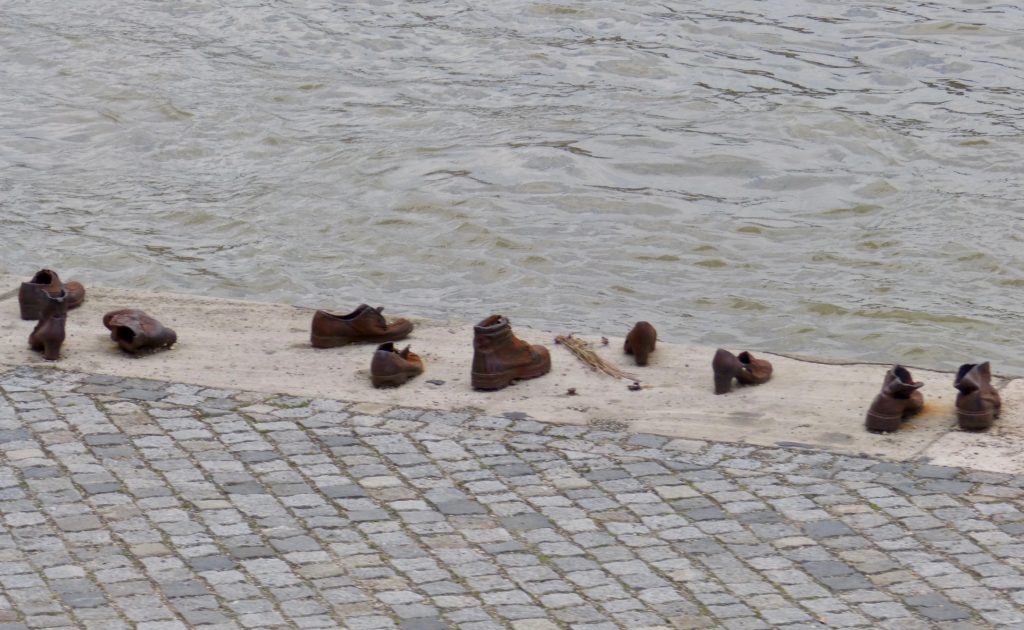
Looking back, this was a wonderful trip; I enjoyed the river cruise formula, loved the itinerary, and thoroughly enjoyed the people we met!

